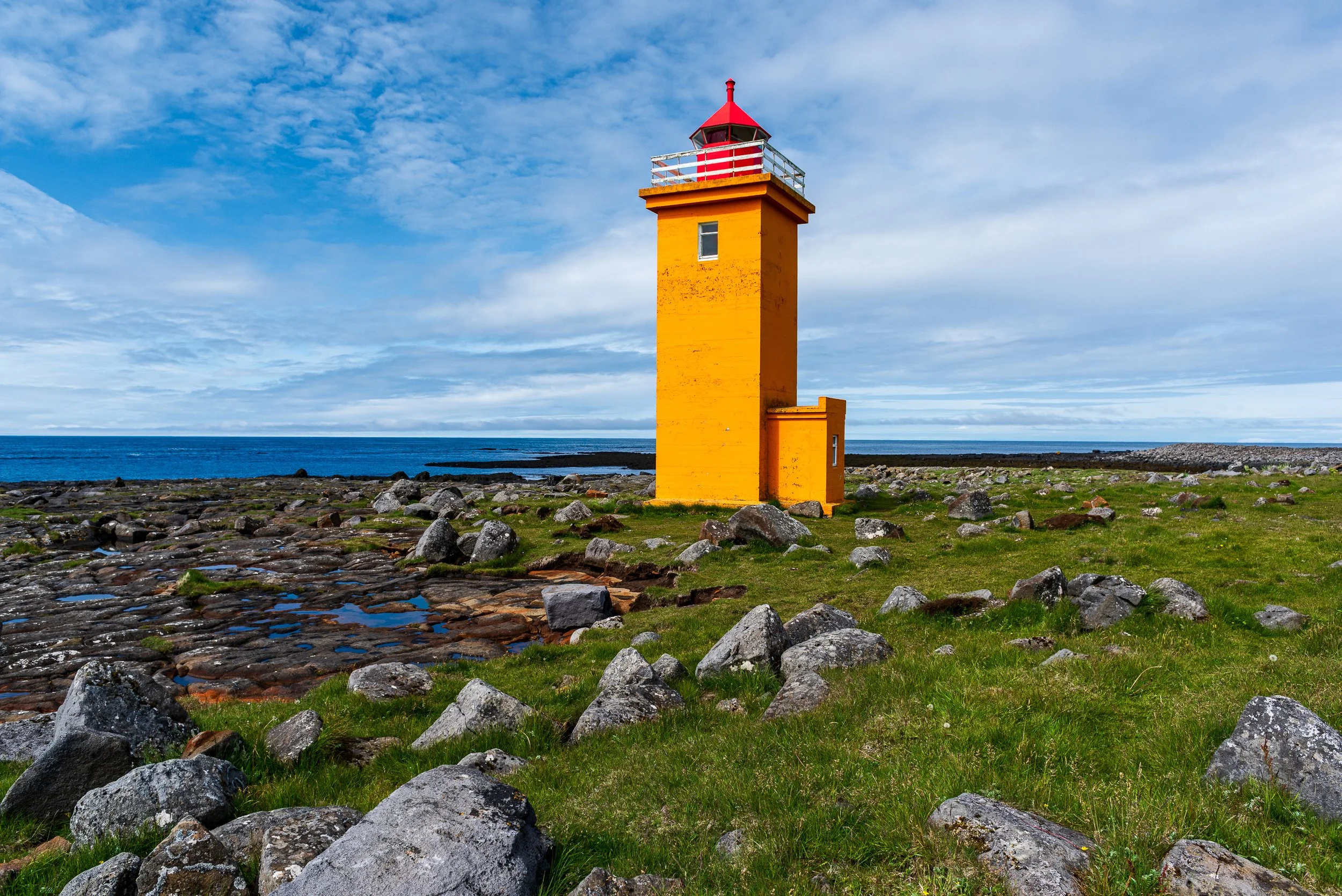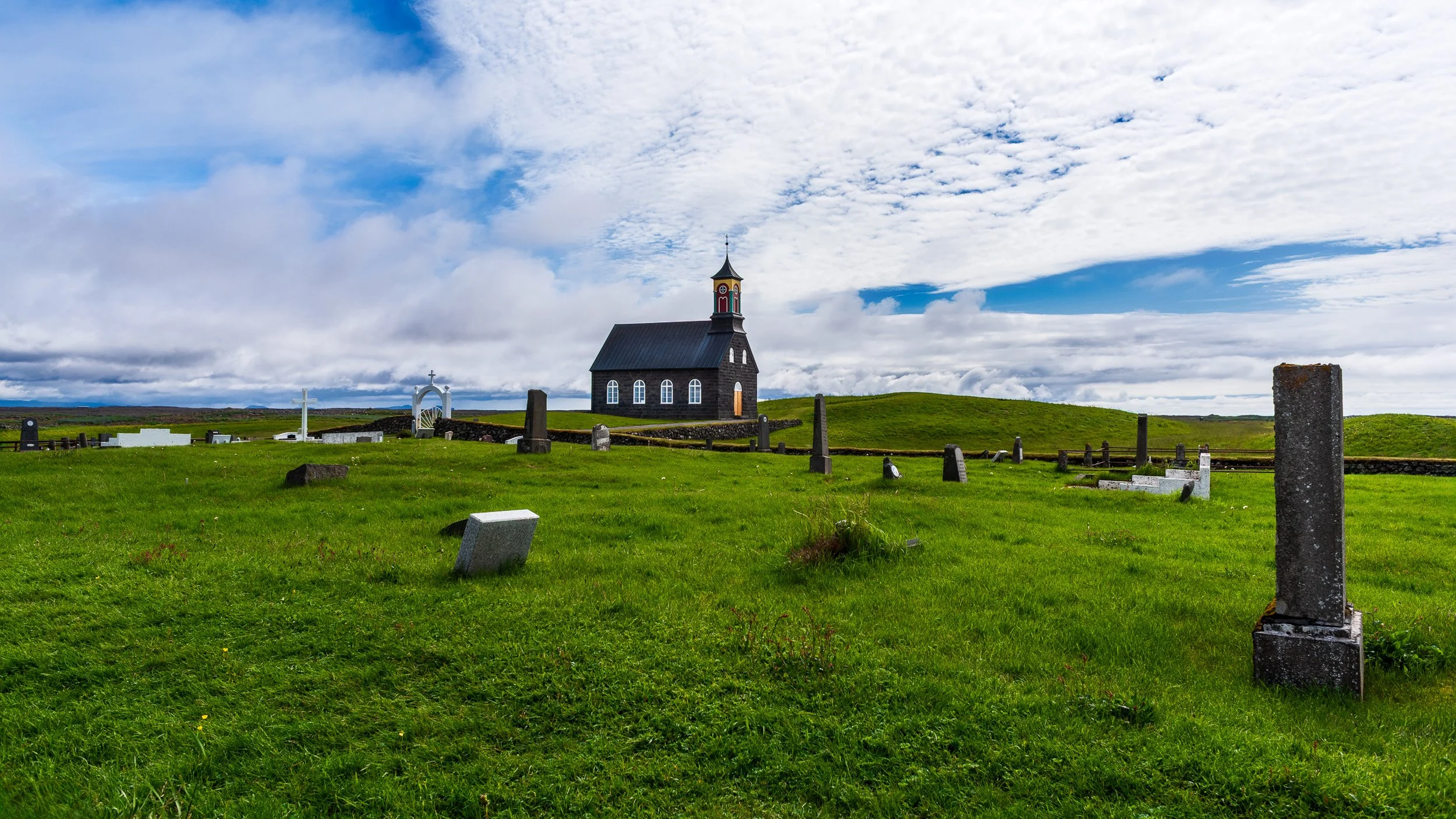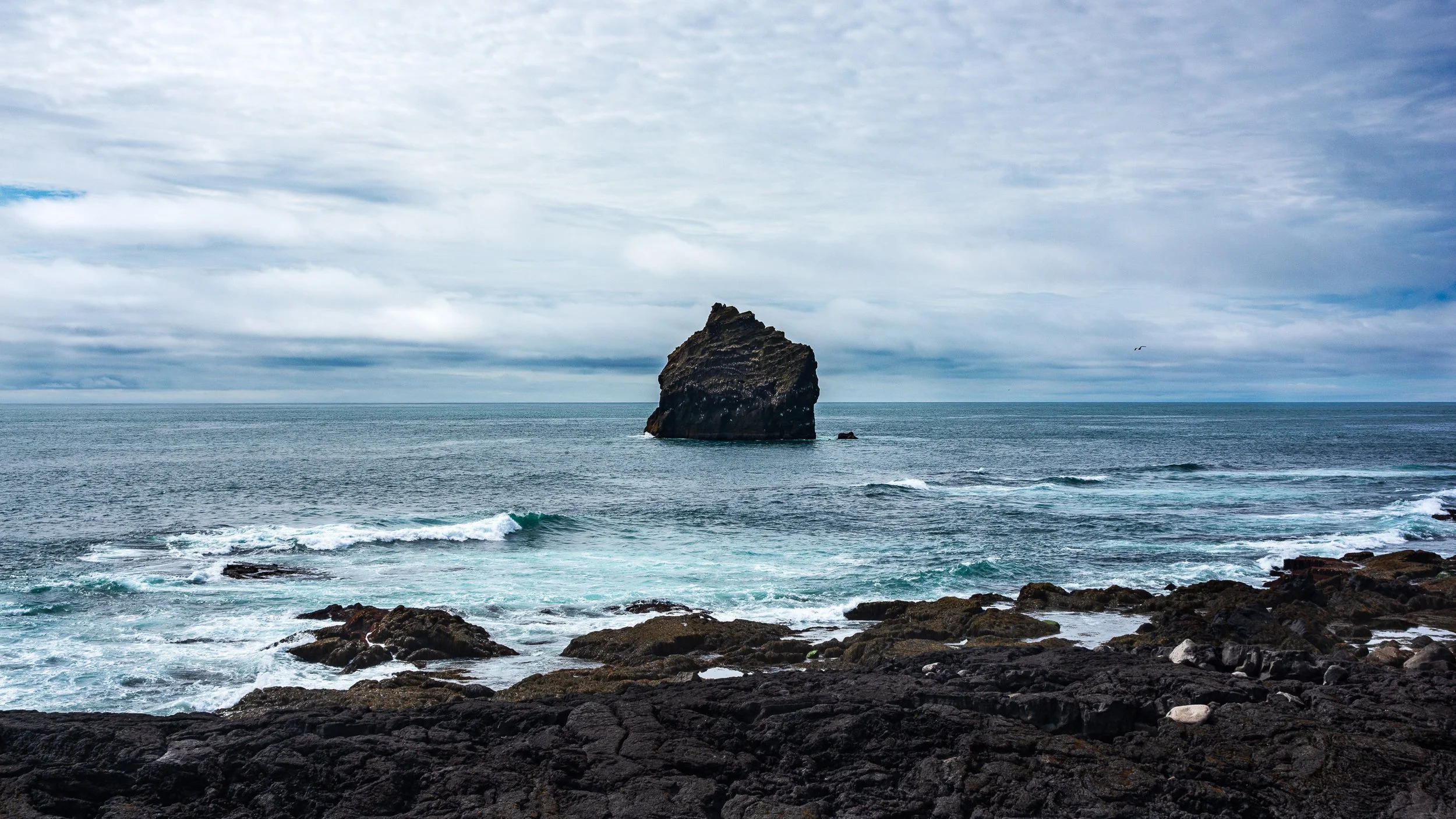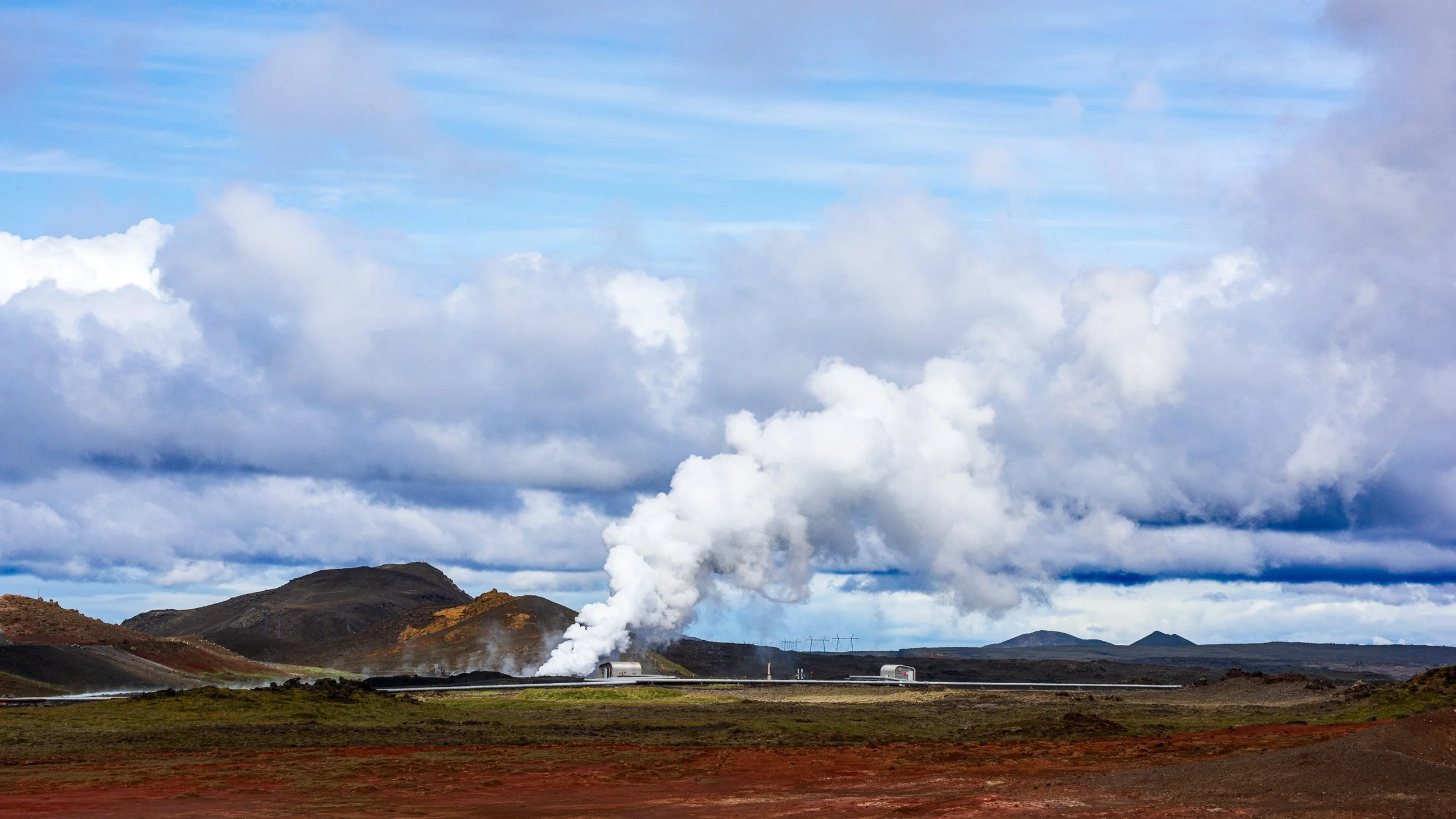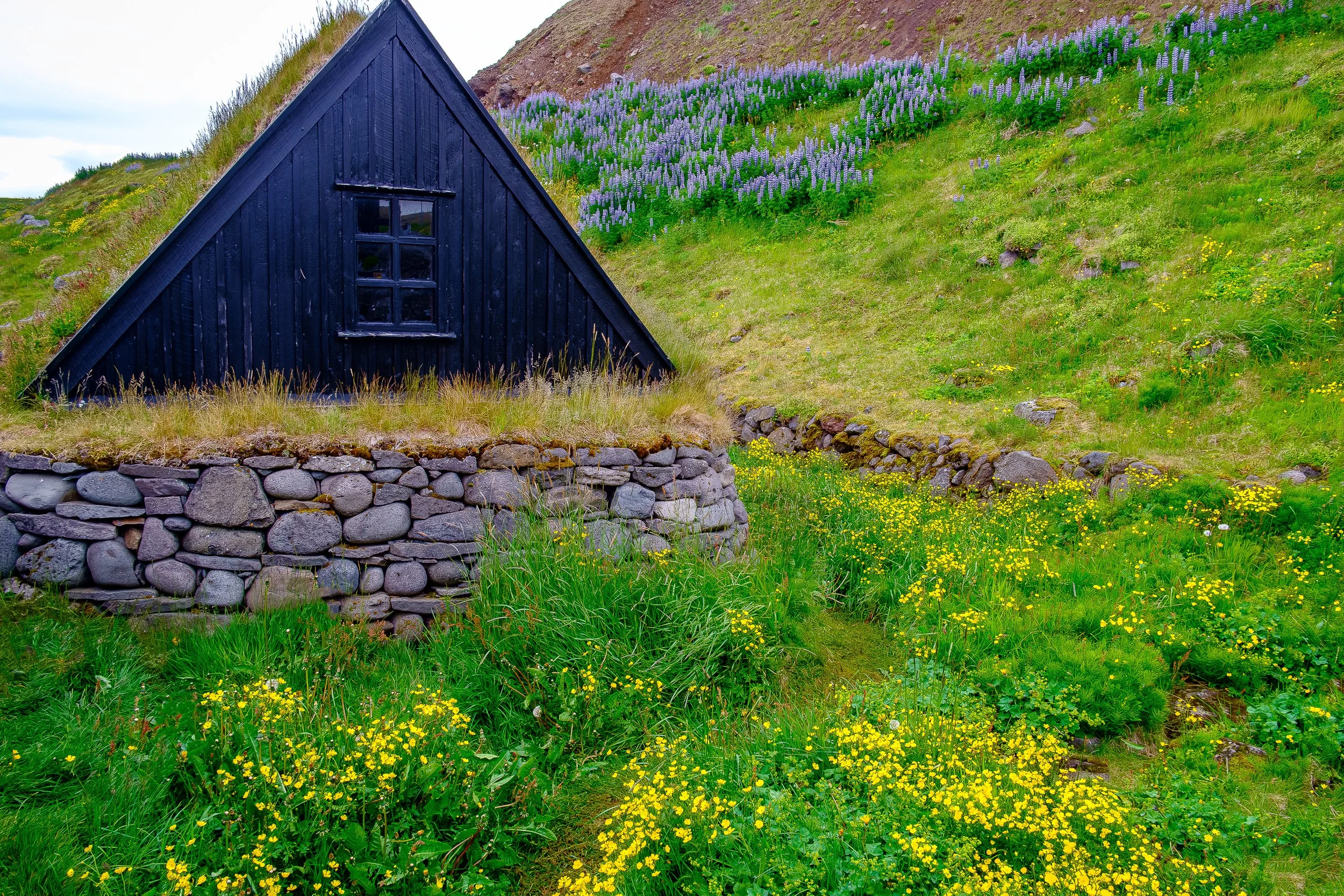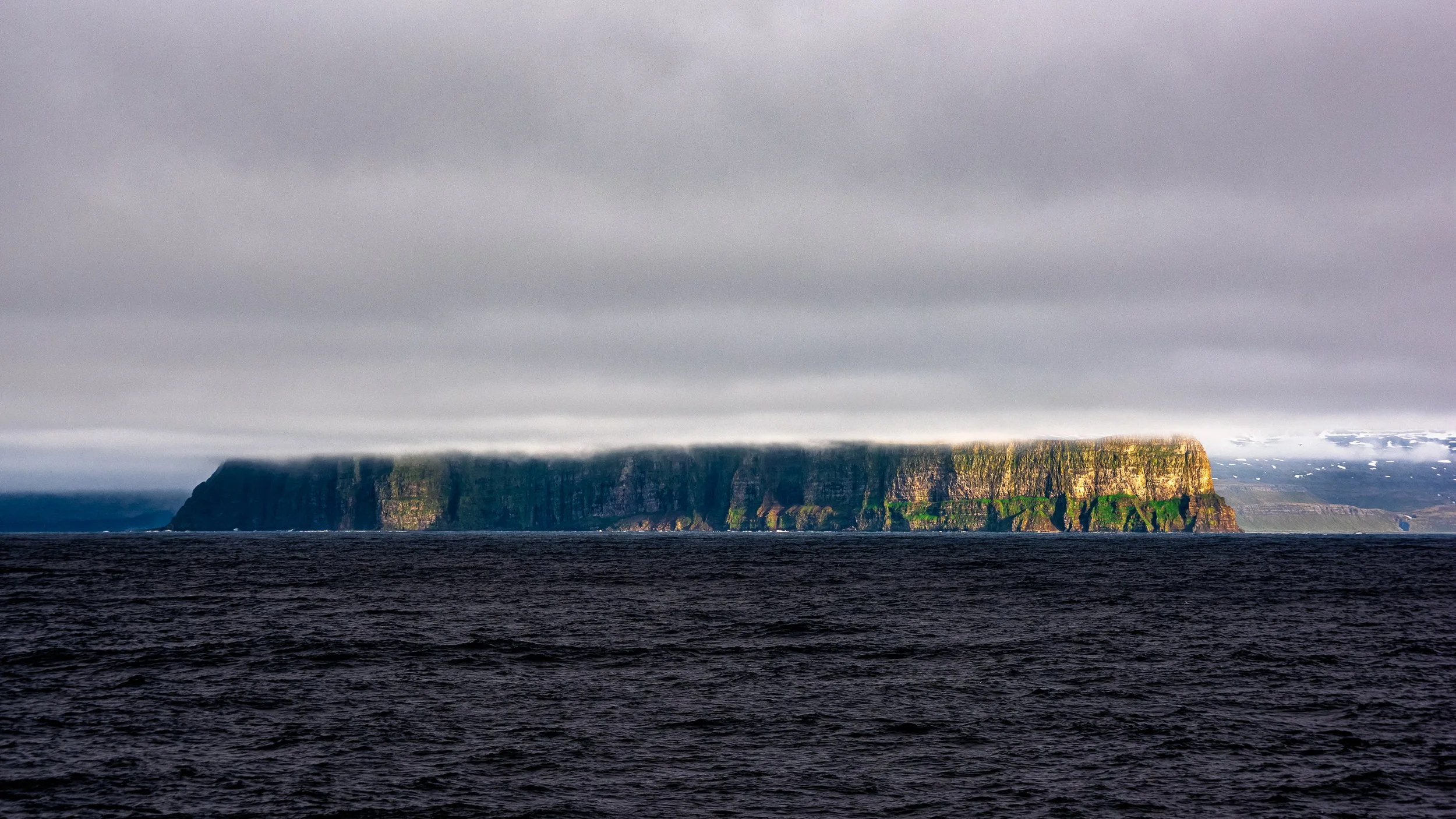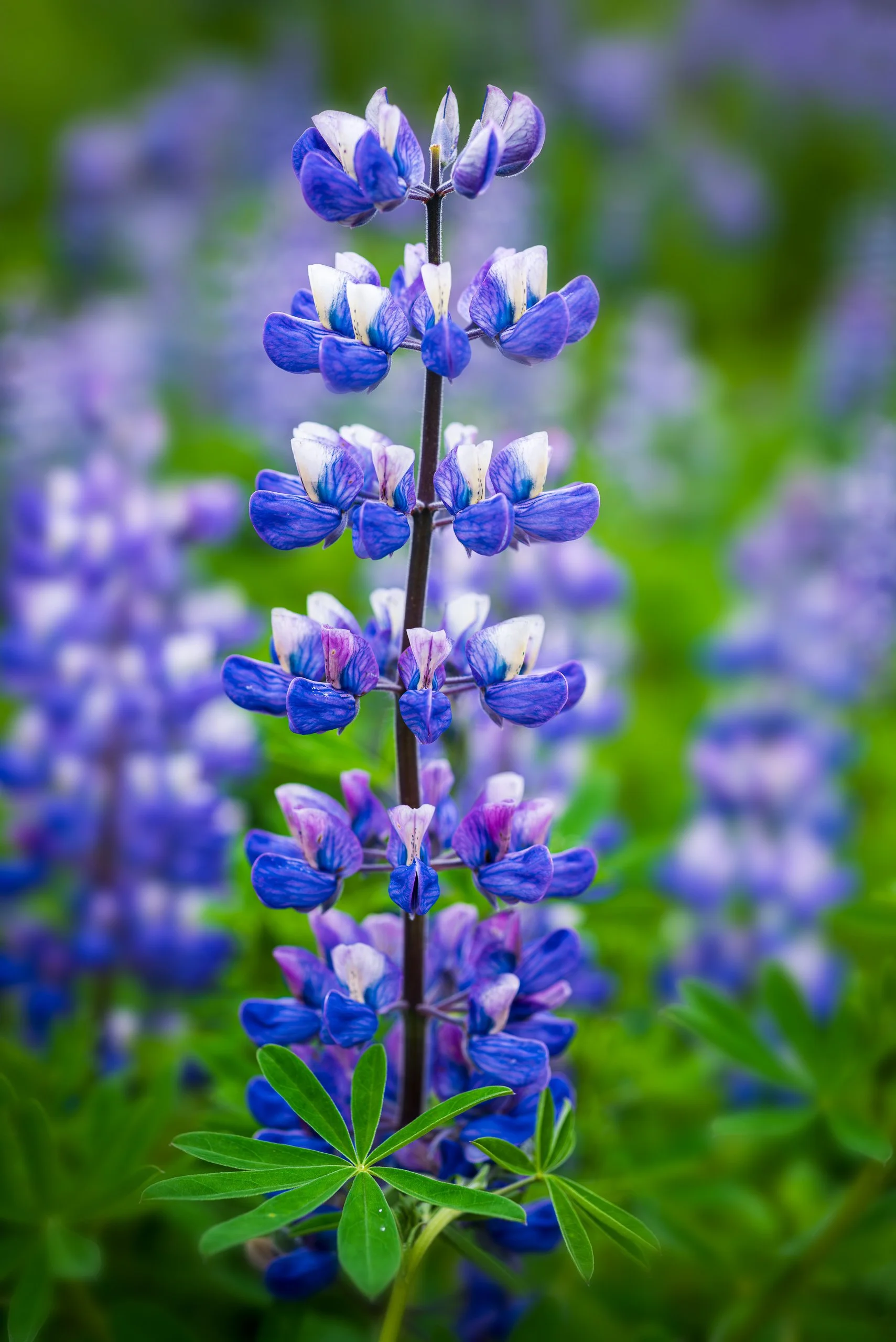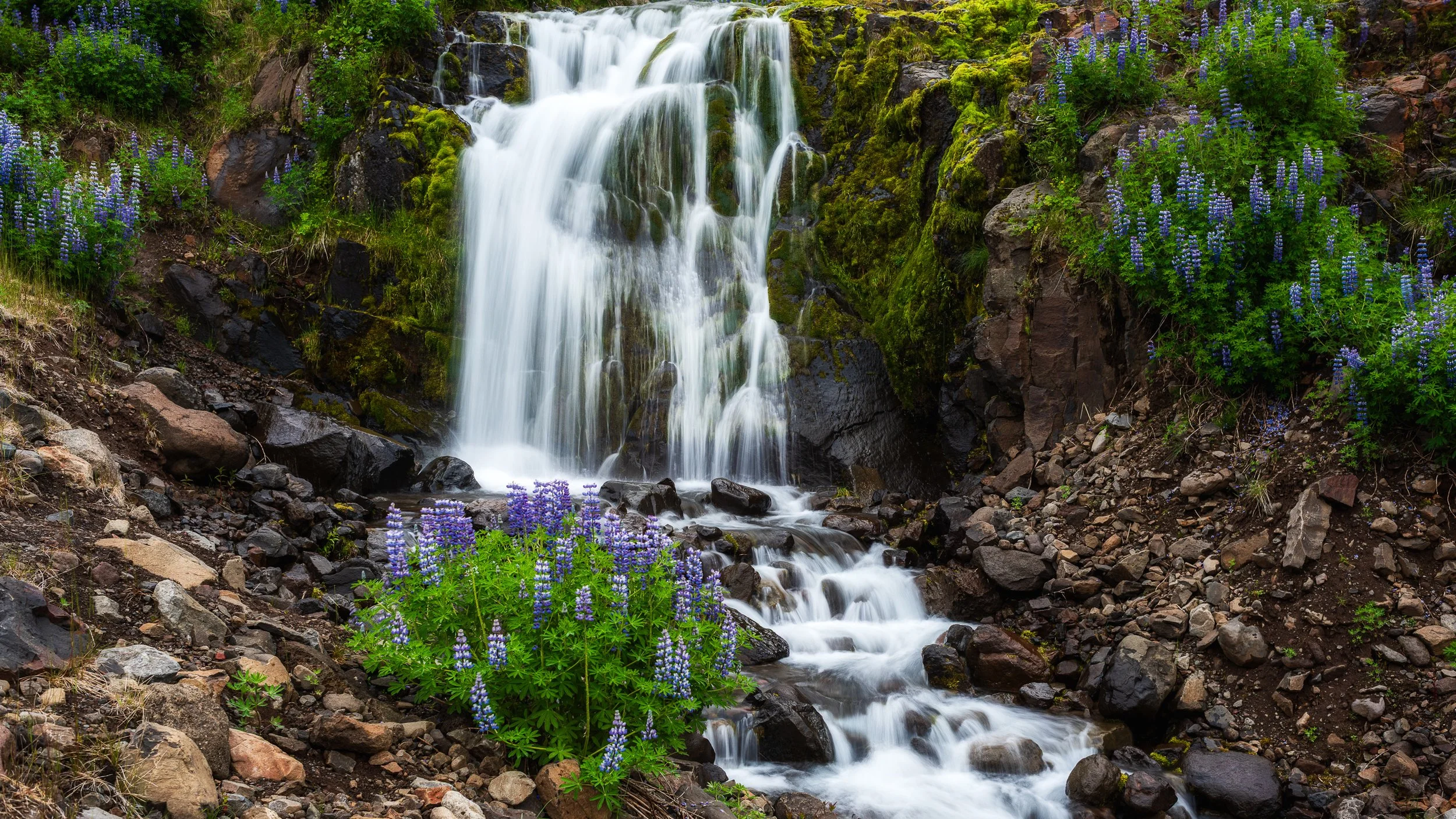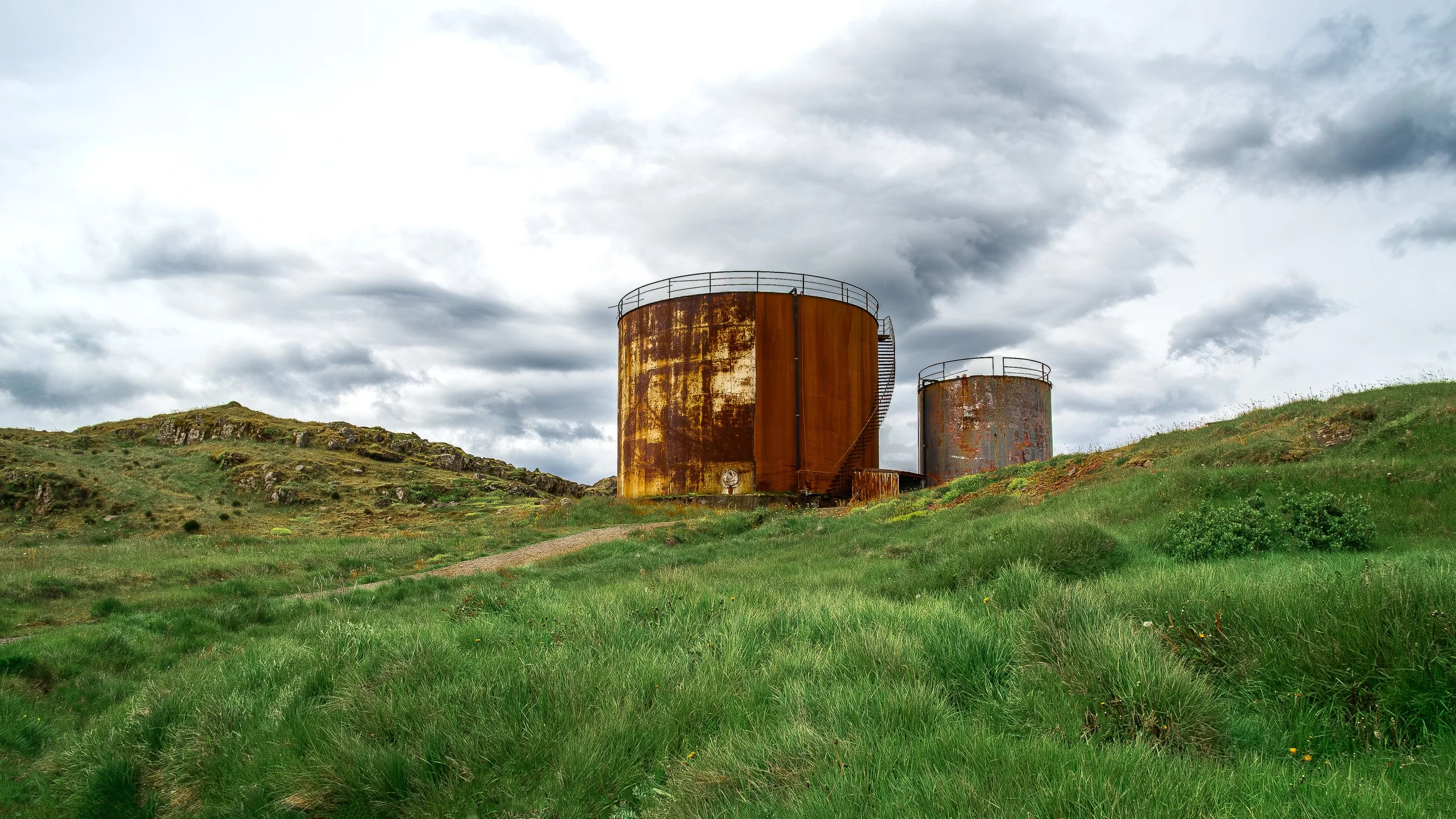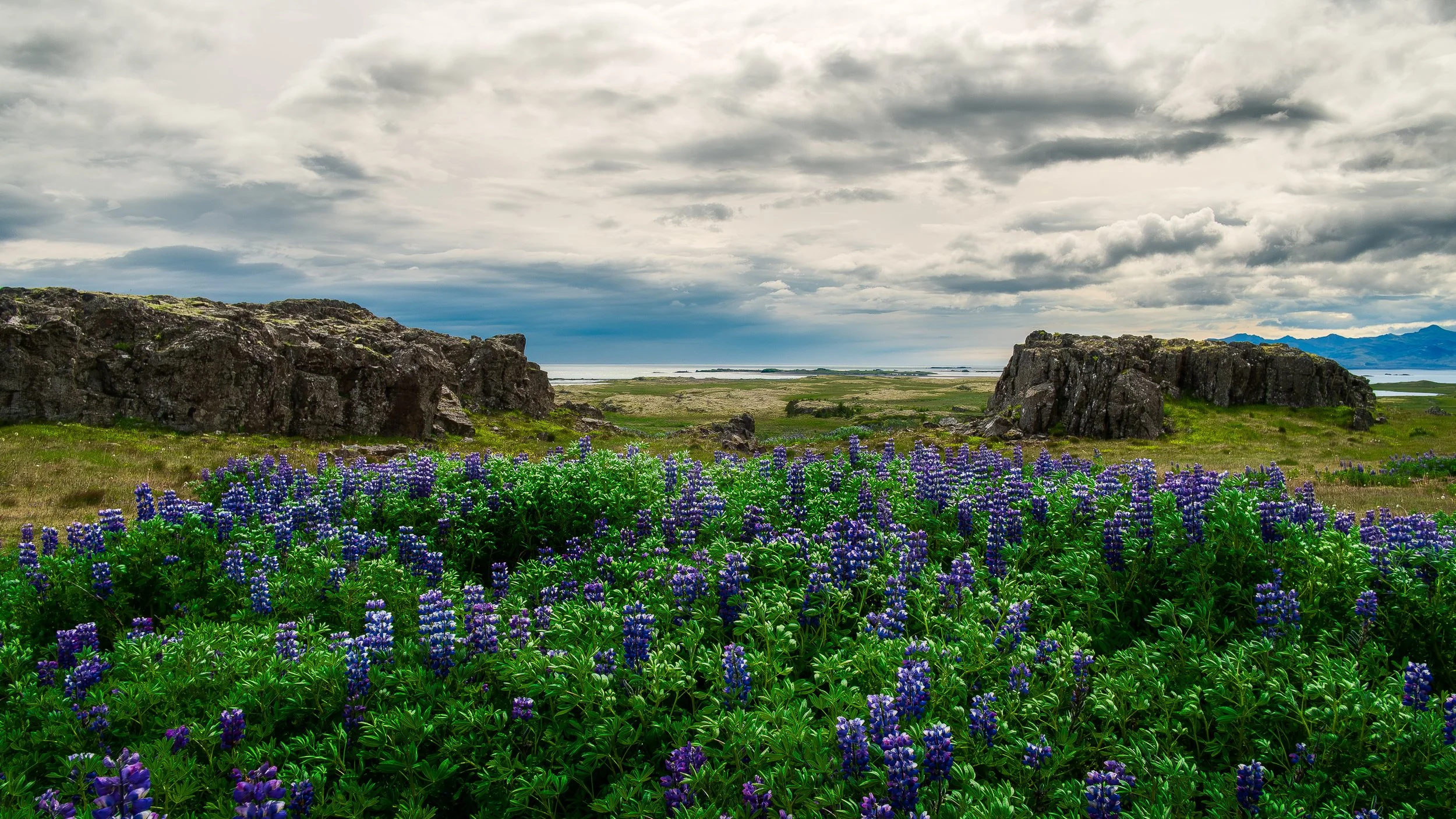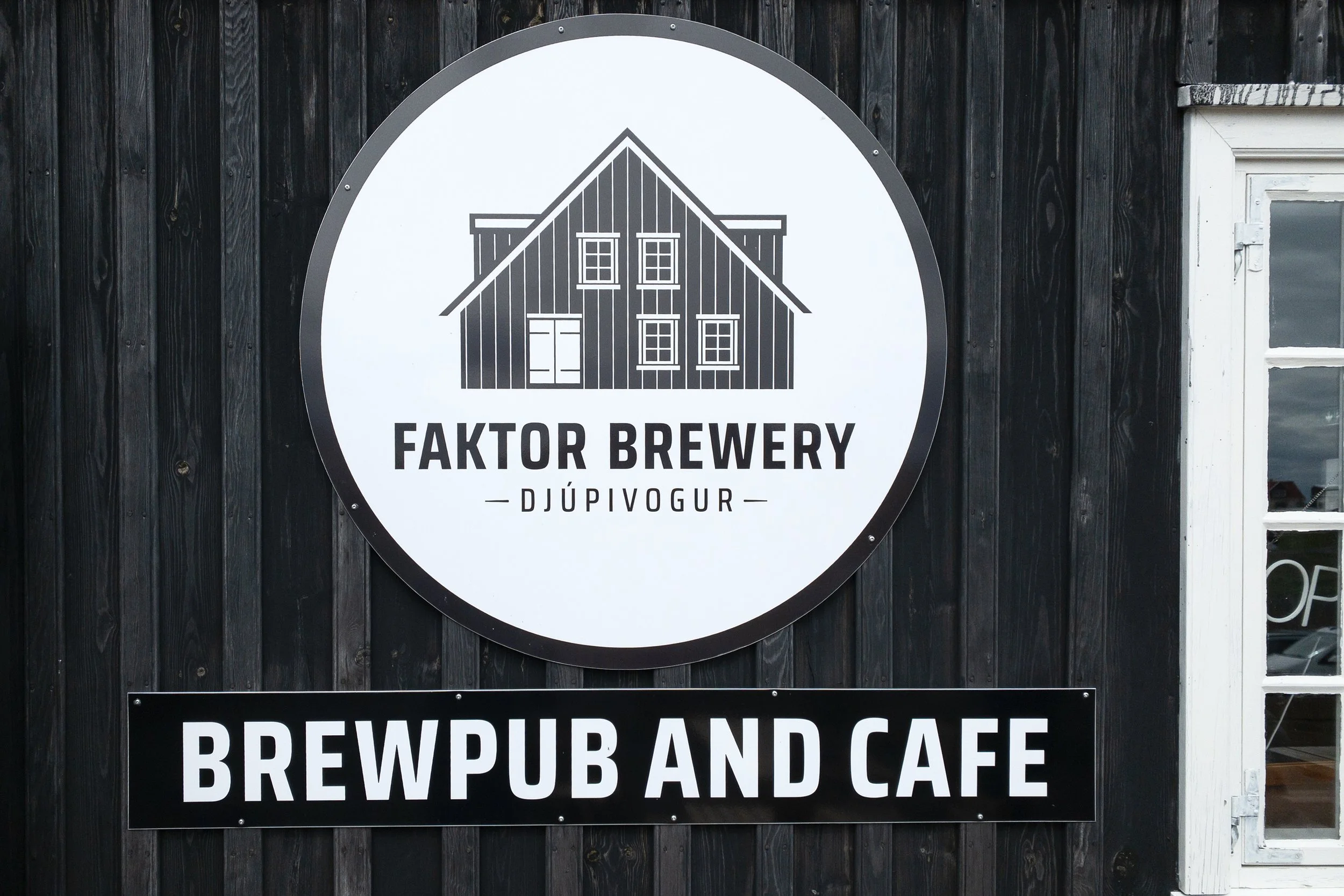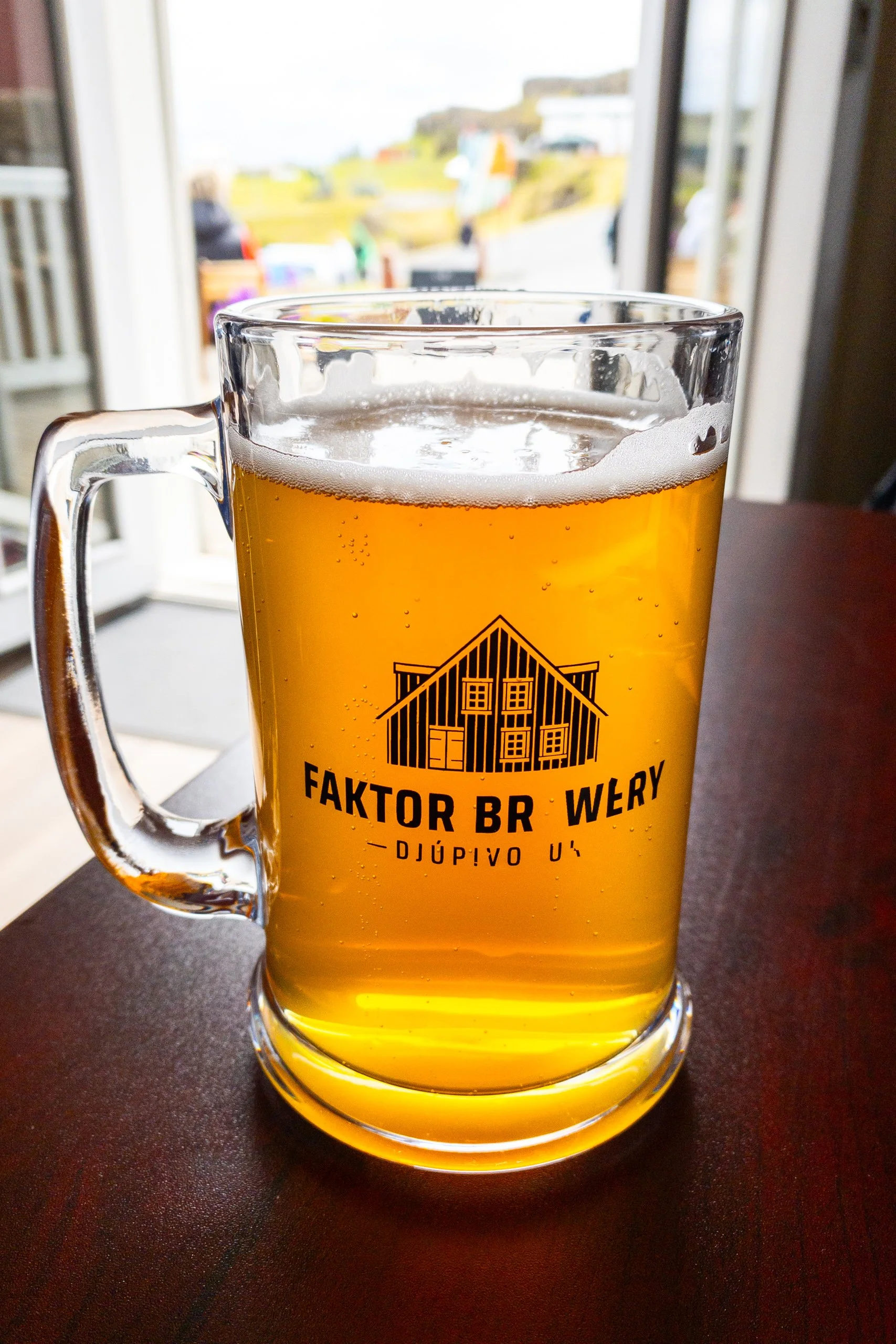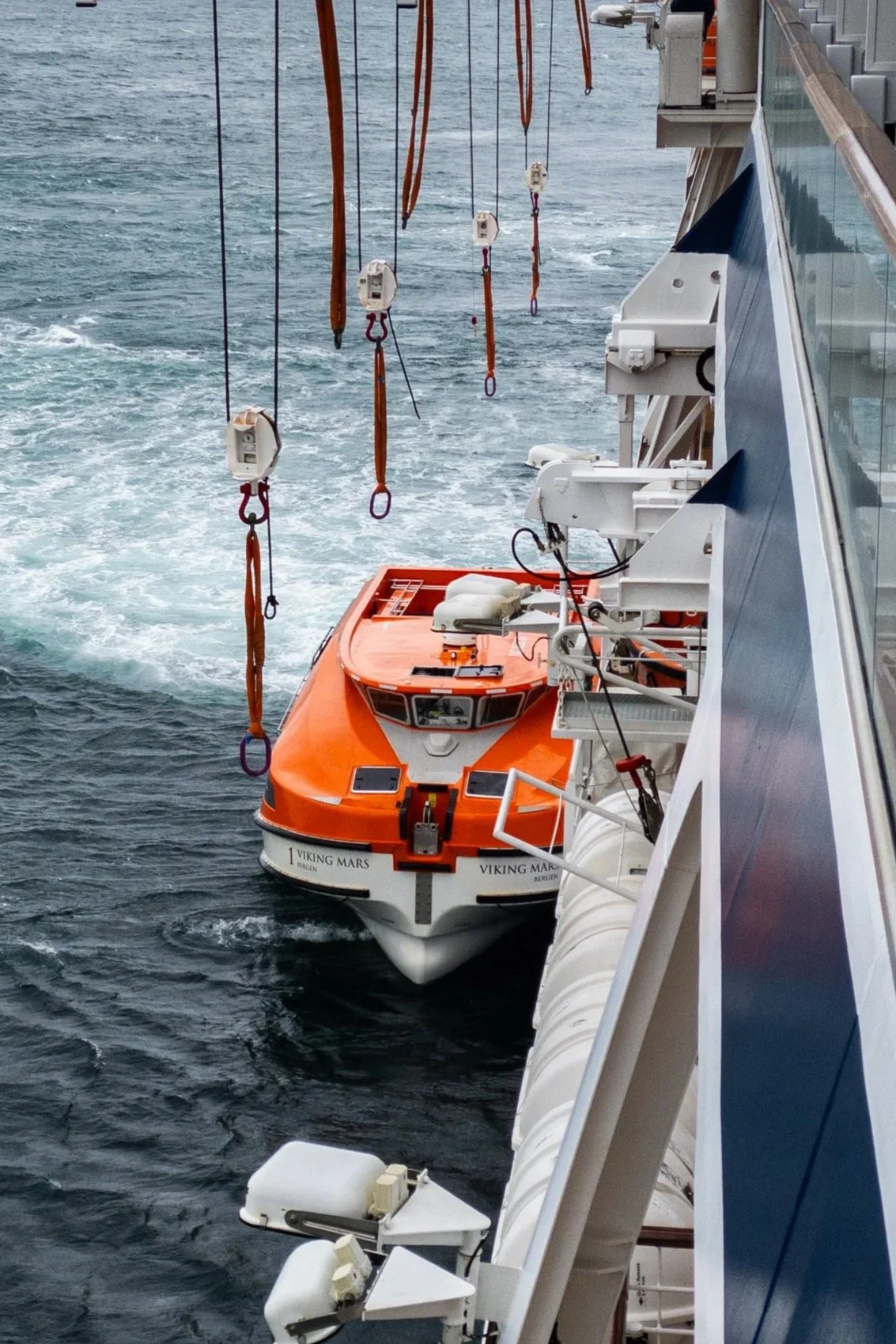Iceland Trip — June 2025
Reykjavik — Lighthouses, Churches and Seismic Faults
We arrived in Reykjavik the morning of June 26th after a six hour flight from Minneapolis. We were greeted with rain, fog and cold — not a great way to start an eight day cruise around Iceland. Hoping for better weather the next day, our second day in Reykjavik, we boarded the ship and set about getting lunch and finding our stateroom.
Dinner came early, or so it seemed to our jet lagged brains. All of Iceland is six hours ahead of Minneapolis, but we had been up all night on the flight and even though it would be light until midnight (and dark for only three hours), we retired early since we had a full day planned for the 27th.
The next morning was not a big improvement on the day before — no rain, but it was still wet and foggy with some wind. Not great for the whale watching cruise my wife had planned, and not great for a full day photography tour of the Reykjanes Peninsula.
During the 45 minute bus ride to the area around Keflavik the weather improved greatly, with even a few hints of sun and bits of blue sky. While this trip to Iceland was not a specific photography trip (maybe someday), I did manage to get a few images that I feel are good enough to offer for sale in my Print Store.
Our first stop was in Garðskagi, home to two lighthouses. The Old Gardur Lighthouse (shown below) was built in 1897 and is the second oldest lighthouse in Iceland. It was replaced in 1944 by the New Gardur Lighthouse, but from a photographer’s viewpoint, the original light, with its red and white stripes standing out against the blue and white sky, is much more attractive.
The Old Gardur Lighthouse No. 1, Iceland | C25-0016
Another lighthouse on the Reykjanes Peninsula is Hopnes Lighthouse located near Grindavik. Built in 1928, Hopsnes, with its bright orange color is as striking as the rugged, craggy and rock strewn land it rests upon.
Hópsnes Lighthouse, Iceland | C25-0015
The next stop on the photography tour was the church at Hvalsnes. The church is constructed of carved stone and wood collected from the area and was consecrated in 1887. It holds about 100 people and is still operating to this day.
Cemetery, Hvalsnes Church | C25-0014
For sheer rugged beauty, the Hafnarberg Sea Cliffs (and stacks) did not disappoint.
Hafnarberg Sea Cliffs | C25-0028
Sea Stack near Hafnarberg Sea Cliffs | C25-0027
Running all across Iceland and splitting the Reykjanes Peninsula and the entire country is a fault line between two geological plates that are slowly moving apart at the rate of a couple centimeters per year. This is clearly evident by the 22 meter black sand filled gap near Sandvik. Spanning the gap is “Leif the Lucky’s Bridge.”
Leif the Lucky's Bridge at Sandvik Iceland | C25-0025
Our last stop before retracing the 45 minute drive back to Reykjavik was the Gunnuhver Geothermal Area. The area is apparently named after a female ghost who was laid to rest there. Steam rises from fissures which are a clue to the source of the hot water used to heat virtually every home and building in the Reykjavik area.
Gunnuhver Geothermal Area, Rekjavik, Iceland | C25-0019
Our bus arrived back at the ship with less than hour to spare before it got underway for the beginning of the clockwise circumnavigation of the country.
Isafjordur — Cool, Clear Water with Endless Daylight
The first port after leaving Reykjavik on our journey around Iceland was Isafjordur. Located in the Westfjords, Isafjordur has evolved from a fishing village dating back to the 16th century into the cultural center of the Westfjords.
After a visit to the Heritage Museum, we boarded a bus for a short journey to the small fishing village of Bolungarvik, located in a cove just to the northeast of Isafjordur. I was taken by the large driftwood logs and fisherman’s salt shed which is part of the Osvor Museum.
Driftwood, Bolungarvik, Iceland | C25-0024
The salt shed is surrounded by lush green grasses, Alaskan lupines and yellow flowers. A fishing salt shed or hut, also known as a salting-house, is a facility where fish and other perishable foods are preserved using salt which was an important part of the fishing industry in Iceland.
Salt Shed, Bolungarvik, Iceland | C25-0023
After leaving the Osvor Museum, we made a stop at a cascading waterfall where our guide scooped pitchers of the cool, clear glacial water for us to drink. This water was as clear and clean, maybe more so, than you would get back home with your Brita water filter.
When we were once again underway and leaving Isafjordur, I captured the image below which immediately reminded me of approaching the fictitious Jurassic Park or Edgar Rice Burroughs’ novel “The Land that Time Forgot.”
The Land That Time Forgot | C25-0010
Following dinner, we made our way to the Explorer’s Lounge on the 7th deck near the bow of the ship for an after dinner drink. Glancing at my watch, which is always set to show the time for next sunrise or sunset, I was reminded that we were about to cross over the Arctic Circle and it was just a few days after the Summer Solstice — no sunset (or sunrise) and 24 hours of daylight.
Seydisfjordur — Lupines and Waterfalls
Seydisfjodur is small, colorful village in northwestern Iceland, with two of the main attractions being the Rainbow Street and the blue church.
The Rainbow Street was first created during a Pride Walk event in 2016, but has now become an annual event when the walk is repainted at the beginning of each summer.
The blue church is a famous landmark in Seydisfjordur and has become one of the main cultural spaces in the village; however, its other claim to fame is the fact that it has been moved twice since it was built in the 1880’s.
Probably the most striking attraction is the Budararfos Waterfall which cascades down from the mountain above Seydisfjordur. What makes it even more striking is the purple and blue of the Alaskan Lupines which cover the hillside. Lupines are not native to Iceland, but were introduced in 1945 to more quickly generate topsoil. Now lupines have exploded over Iceland and have been label as an invasive species.
Below is a closer view of the middle section of the waterfall surrounded by lupines.
Budararfoss Waterfall and Lupines | C25-0020
Djupivogur — Tankurrin & Eggs with a Beer Chaser
The next stop on our journey around Iceland was Djupivogur, another small village. This was our first experience of being “tendered” to shore since the small harbor could not handle our large cruise ship.
One of the first landmarks on our walking tour of the village is the memorial to Hans Jonatan, an escaped slave who made his way to Djupivogur in 1802 and whose descendants now number over a thousand.
Continuing on the walking tour there were numerous “super Jeeps”, specifically outfitted for tours into the interior.
The Eggs at Gleðivík Bay (Merry Bay) is an art installation by the artist Sigurður Guðmundsson consisting of 34 eggs of Chinese granite which represent the eggs of the birds nesting in the area.
The next attraction, and perhaps the most interesting, Tankurinn is a large, rusted steel tank, formerly used to store cod liver oil, but now converted into a cultural exhibition space for art and music. Our tour group was ushered inside to several rows of chairs. Once we were seated, the door was closed and we were treated to an a cappella rendition of traditional Icelandic songs which reverberated beautifully inside the cavernous tank.
Tankurinn, Djúpivogur Iceland | C25-0013
Leaving Tankurinn, we climbed up a long, steep path and which brought us to a sweeping vista of lupines, rocks and the ocean.
Lupines and Rock Formations | C25-0012
Following the walking tour, we made our way back to the harbor for a nice locally brewed beer from the Faktor Brewery while we waited for a tender boat to return to the ship. As a photographer, I am “always in search of the perfect sunset,” and as a beer lover, I am “always in search of the perfect IPA.” Faktor’s SPADI did not disappoint in the IPA department, and the yellow-gold color reminded me of some of the sunsets I have photographed.
Our trip back to the cruise ship was not as smooth as the ride into the harbor, with 6 - 8 foot swells making for a bit of a harrowing return onboard.
Transit - Back to Reykjavik
Our final destination to Heimay had to be scrapped due to heavy seas which would have made trips to shore by tender too dangerous; however we were blessed with some beautiful weather for the transit back to Reykjavik.
Blue Horizon | C25-0011


